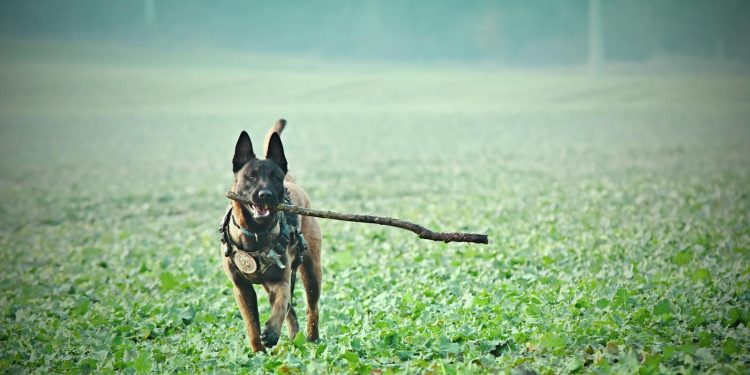If you’ve ever watched a dog zip through an agility course, weaving in and out of poles, jumping over hurdles, and racing through tunnels, you’ve probably thought, “That looks like a lot of fun!” The good news is, it’s not just for professional trainers or elite dogs—anyone can get started with canine agility training, regardless of their dog’s breed or experience level. This guide will help you take your first steps into the exciting world of canine agility training, a wonderful activity that provides physical exercise, mental stimulation, and an incredible bonding opportunity for you and your dog.
Understanding Agility Training
Agility training is a sport that involves navigating a series of obstacles as quickly and accurately as possible. These obstacles can include jumps, tunnels, weave poles, A-frames, and more. Your role is to guide your dog through this course without using physical prompts—you rely on voice commands, hand signals, and body language. It’s a fast-paced activity that requires focus, communication, and teamwork. Not only does it provide a great physical outlet for high-energy dogs, but it also gives your pup a mental workout, helping improve their confidence and responsiveness.
Why Agility Training?
Agility training is more than just an entertaining pastime. It has numerous benefits for both dogs and their owners. Physically, agility helps keep your dog fit, builds stamina, and strengthens muscles. Mentally, it requires your dog to think critically and respond quickly to your cues, boosting problem-solving skills. It also fosters a deep sense of trust between you and your dog, which can help in everyday training and behavior. Additionally, agility is a fantastic way to manage the energy of active breeds such as Border Collies, Australian Shepherds, and Terriers, who may become bored or destructive if not adequately stimulated.
Getting Started: Building Basics
Before diving into a full-blown agility course, it’s essential to establish some foundation skills. Basic obedience is key—commands like sit, stay, come, and down will be used constantly in agility. Start by ensuring your dog reliably responds to these commands in a controlled environment without distractions. Once these basics are mastered, you can gradually introduce some simple agility elements like low jumps or tunnels. Keep the initial sessions short and positive—this should be a fun experience for both you and your dog.
Setting Up Your Own Agility Course
You don’t need a professional facility to practice agility—you can set up an obstacle course right in your backyard or even indoors if you have the space. There are plenty of budget-friendly options available for agility equipment, such as tunnels, weave poles, and jumps. If you’re on a budget, you can even make your own obstacles out of household items. For instance, a broomstick placed across two chairs can serve as a makeshift jump. Keep in mind that safety is a priority, so make sure that all equipment is stable and safe for your dog to use.
The First Obstacles: Introducing Your Dog to Agility Equipment
Begin with simple obstacles, such as tunnels and jumps, which are usually easy and fun for most dogs to learn. Use plenty of positive reinforcement, such as treats and praise, to encourage your dog to explore the new equipment. When introducing your dog to a tunnel, for example, you might start by simply encouraging them to walk through a shortened version of the tunnel with a treat in your hand. Once your dog gains confidence with individual obstacles, you can start linking them together into short sequences.
The Importance of Handlers: Mastering Communication
In agility training, effective communication between you and your dog is critical. You must guide your dog through the obstacles without a leash, which means your dog will depend heavily on your body language, voice, and hand signals. Practice your handling skills by working on leading your dog in different directions, and ensure that they respond to verbal cues. Handlers often practice movements like crossing in front of or behind their dog to redirect them. Clear communication makes all the difference between a confused dog and one that zips confidently through the course.
Training with Positivity
Positive reinforcement is the cornerstone of effective agility training. Use treats, toys, and enthusiastic praise to motivate your dog. Every time your dog successfully completes an obstacle, celebrate that achievement to build their confidence. Avoid punishment or frustration—agility training is supposed to be fun, and it’s crucial that your dog enjoys the process. Keeping a lighthearted attitude will ensure that agility remains an activity that your dog looks forward to. It’s all about keeping the training enjoyable and rewarding to create a positive experience for your pet.
The Role of Conditioning and Fitness
Agility training is physically demanding, so conditioning is a critical part of the process. Make sure your dog is in good health before starting agility—a visit to the vet can help determine whether they’re ready for such physical activity. Gradually increase the intensity of training as your dog builds strength and stamina. Regular walks, swimming, and playing fetch are great supplemental exercises to keep your dog’s muscles strong and their cardiovascular health in check. Remember that warm-up and cool-down routines are also important to prevent injuries, just like with any athlete.
Handling Challenges and Frustrations
Agility training is a journey, and it’s normal to face challenges along the way. Some dogs may be hesitant with certain obstacles, while others might get overly excited and struggle to focus. The key is to remain patient and break the training into small, manageable steps. If your dog is having trouble with an obstacle, take a step back and make it simpler. For instance, if your dog is reluctant to weave through poles, start with just two poles and reward heavily for progress. The more relaxed and patient you are, the better your dog will respond to the training.
Joining an Agility Class
Taking an agility class is an excellent way to get started, particularly for beginners who may need more guidance or motivation. In a group class, you’ll receive professional instruction, which will help you and your dog learn correct techniques right from the start. Additionally, your dog will have the opportunity to practice around other dogs, which helps with socialization and improves focus in distracting environments. Many local training centers and dog clubs offer agility classes that cater to different levels—from beginners to more advanced training.
Building Confidence and Trust
One of the most rewarding aspects of agility training is the trust it builds between you and your dog. You’re asking your dog to jump through hoops, run through tunnels, and take direction on the fly, all without a leash. This requires a level of trust that goes beyond basic obedience. As you train, you’ll notice your dog becoming more responsive and confident, not only in agility but also in their day-to-day behavior. Consistent practice, lots of rewards, and celebrating small wins will make your dog more eager to work with you and trust in your guidance.
Competing in Agility
Once you and your dog have mastered the basics, you might consider participating in agility competitions. Agility trials are held all over the country and are open to dogs of all breeds and sizes. Competing is an exciting way to challenge yourself and put your training to the test. It’s also a great way to meet other agility enthusiasts and share tips and experiences. Remember that competitions are supposed to be fun—the goal is to enjoy the activity, bond with your dog, and celebrate the progress you’ve made together.
Making Agility a Lifelong Activity
Agility isn’t just for young dogs—it can be a lifelong activity for dogs of all ages. Older dogs may need lower-impact obstacles or a slower pace, but they can still enjoy the challenges and stimulation that agility provides. Adapt the training to suit your dog’s age, energy level, and physical condition to ensure that they stay active and happy well into their senior years. The focus should always be on having fun and enjoying the journey with your canine companion.









Discussion about this post